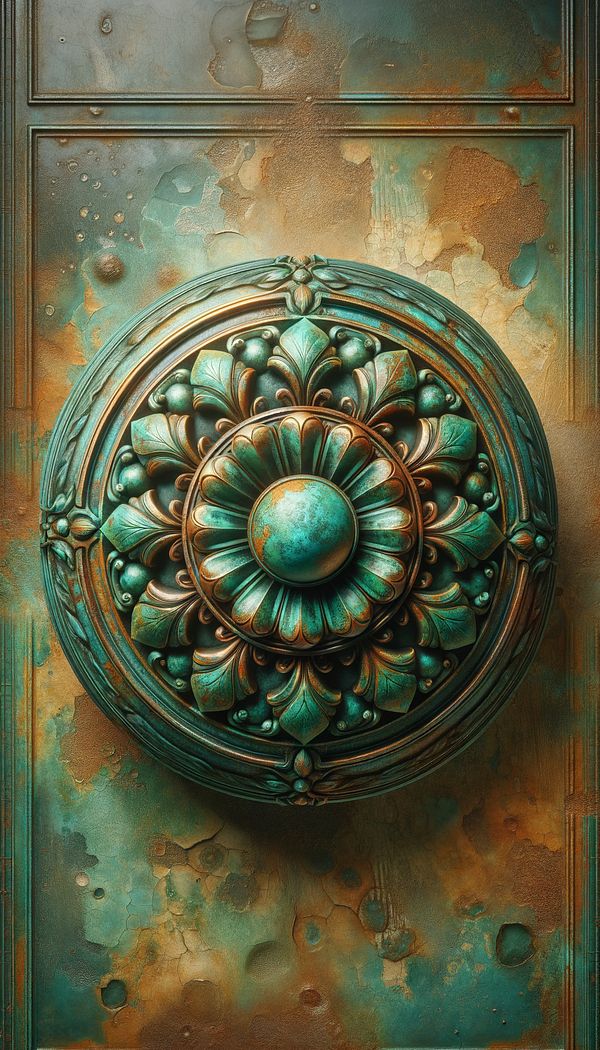What is Verdigris?
Verdigris is a green or bluish patina formed on copper, brass, or bronze surfaces.
Description
Verdigris is a fascinating phenomenon that occurs naturally over time when copper, brass, or bronze is exposed to the elements. This patina develops as a result of a long-term chemical reaction between the surface of the metal and atmospheric oxygen, often accelerated by the presence of water, carbon dioxide, and other airborne substances. The result is a vibrant green or bluish-green coating that is both protective and aesthetically intriguing.
In the context of interior design, verdigris is highly valued for its unique color and rustic appearance. It can enhance the visual appeal of both contemporary and traditional spaces by adding a touch of historical charm and texture. Designers may incorporate verdigris-finished accessories, furniture pieces, or architectural elements to craft a distinctive atmosphere within a room.
Moreover, the allure of verdigris extends beyond its visual properties; it also symbolizes the beauty of aging and the passage of time, adding a layer of depth to interior spaces. Recognizing the potential of verdigris, designers and craftsmen often intentionally accelerate the patination process to achieve this effect on newer metal pieces, thereby marrying the old with the new in a way that is both creative and respectful of materials.
Usage
Verdigris can be found on a variety of interior design elements, such as decorative hardware (door knobs, drawer pulls), lighting fixtures, statues, and other decorative objects. Additionally, it can be used in outdoor settings on garden sculptures, fountains, and landscape lighting, where the elements expedite its formation. This versatile patina supports a range of design styles, from the elegance of a classic French château to the raw, industrial aesthetic of a modern loft.
FAQs
-
How is verdigris formed?
Verdigris forms through a chemical reaction between the copper, brass, or bronze surface and atmospheric oxygen, often accelerated by moisture, carbon dioxide, and other substances in the air. This results in a protective green or bluish patina.
-
Can verdigris be applied intentionally to metal surfaces?
Yes, designers and craftsmen can accelerate the formation of verdigris on metal surfaces through various techniques to achieve this aesthetic intentionally for interior design purposes.
-
Is verdigris safe to use in interior designs?
Verdigris is generally safe and primarily used for its visual appeal. However, care should be taken with surfaces that come into frequent contact with skin or food, as verdigris can contain compounds that are mildly toxic if ingested in large amounts.
Practical Application
To incorporate verdigris into your interior design, consider adding elements such as verdigris-finished lamps, frames, or furniture. For an authentic look, search for vintage items that have naturally acquired this patina over time, or opt for newly crafted pieces treated to simulate the effect. Pairing verdigris elements with materials like wood, stone, and other metals can enrich the texture and depth of your space.
-
Architectural Elements199 articles
-
Design Styles478 articles
-
Decorative Techniques322 articles
-
Decorative Objects240 articles
-
Color & Patterns154 articles
-
CoastalCoastal is an interior design style that is inspired by the look and feel of a beach and ocean.
-
Bullion FringeBullion fringe is a type of decorative trim used in interior design to add texture and elegance.
-
Pedestal DeskA pedestal desk is a large, freestanding desk featuring drawers or cabinets in its supporting pedestals.
-
UpscaleUpscale refers to high-end or luxury aspects in interior design.
-
CohesiveCohesive refers to a design that appears unified and harmonious, with all elements working together effectively.
